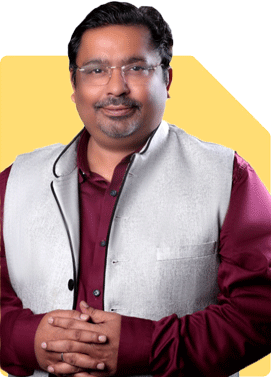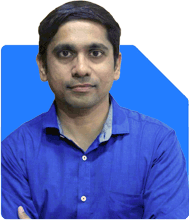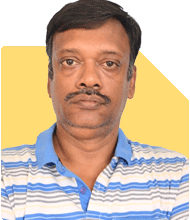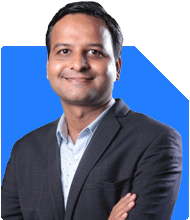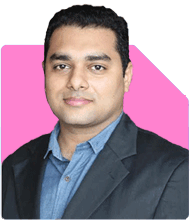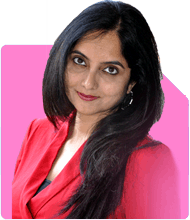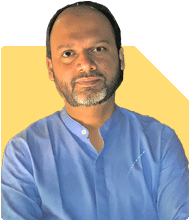I am 49 years of age and completing my 50 this year end. My funds requirements are:
1. Rs 50 lacs by 2031/32.
2. Rs 120 lacs by 20233/34.
3. Rs 50 lacs by 2036/37.
The above requirement are worked out based on my kids settlements and additional retirement corpus.
Presently I am investing 20K monthly in SIP which has fund value of 3.5 lacs as of now.
How much more I need to invest and which fund which can fulfill above requirements.
Ans: I can help you create a plan to meet your financial goals. Let's work through the details step-by-step.
Understanding Your Financial Situation
You are currently 49 years old and planning for three major financial goals:
Rs 50 lakhs by 2031/32
Rs 120 lakhs by 2033/34
Rs 50 lakhs by 2036/37
You are investing Rs 20,000 per month in SIPs with a current fund value of Rs 3.5 lakhs.
Compliments and Appreciation
First, I want to commend you for your proactive approach to financial planning. Investing in SIPs and having clear financial goals shows great foresight and dedication to securing your future and your children’s future. This commitment will pay off significantly over time.
Setting Financial Goals
Your primary goal is to accumulate Rs 220 lakhs (Rs 2.2 crores) by 2036/37, distributed over three milestones. To achieve these goals, we need to assess your current investments and determine how much more you need to invest.
Evaluating Current Investments
You are currently investing Rs 20,000 monthly in SIPs. With a fund value of Rs 3.5 lakhs, this is a good start. However, to meet your future requirements, we need to ensure your investments are optimized for growth.
Investment Strategy
Understanding Mutual Funds
Mutual funds are a powerful investment tool due to their diversification, professional management, and potential for high returns. Let's break down the different types of mutual funds you can consider:
Equity Mutual Funds: These invest in stocks and are suitable for long-term goals. They have the potential for high returns but come with higher risk. Given your long-term horizon, equity funds can help you achieve substantial growth.
Debt Mutual Funds: These invest in fixed-income securities like bonds. They are less risky than equity funds and provide regular income. They are suitable for short to medium-term goals and for balancing the overall risk of your portfolio.
Hybrid Mutual Funds: These funds invest in a mix of equity and debt instruments. They offer a balanced approach with moderate risk and returns. These can be a good choice for a diversified portfolio.
Compounding and Its Power
One of the greatest benefits of investing in mutual funds is the power of compounding. Compounding allows your investment earnings to generate their own earnings over time. The longer you stay invested, the more significant the impact of compounding.
Calculating the Required Investments
Goal 1: Rs 50 Lakhs by 2031/32
To meet this goal, you need to invest in a mix of equity and debt funds to balance growth and risk. Given the time frame, a higher allocation to equity funds is advisable.
Goal 2: Rs 120 Lakhs by 2033/34
For this goal, you need a more aggressive investment strategy. Higher equity exposure will help in achieving this substantial amount.
Goal 3: Rs 50 Lakhs by 2036/37
This goal can be met with a balanced approach, utilizing hybrid funds to maintain growth while managing risk.
Monthly Investment Requirement
Based on your goals, it is crucial to calculate the additional amount you need to invest monthly. Assuming an average annual return of 12% from equity funds, you will need to increase your monthly SIP contributions. Here’s a rough guide:
Current SIP Contribution: Rs 20,000 per month.
Estimated Shortfall: To meet your total requirement, you will likely need to increase your SIP to around Rs 50,000 to Rs 60,000 per month. This is an estimate and actual requirements can vary.
Steps to Achieve Your Goals
Increase SIP Contributions: Gradually increase your SIP contributions to align with your financial goals. Aim for Rs 50,000 to Rs 60,000 monthly.
Diversify Investments: Allocate funds across equity, debt, and hybrid mutual funds. This diversification helps manage risk and optimize returns.
Regular Review: Periodically review your portfolio to ensure it aligns with your goals. Adjust the allocation as needed based on market conditions and your financial situation.
Stay Invested: The key to achieving long-term financial goals is to stay invested. Avoid withdrawing funds unless absolutely necessary. Let compounding work in your favor.
Why Not Index Funds
Index funds might seem attractive due to their low cost and simplicity. However, they simply track market indices and do not aim to outperform them. Actively managed funds, on the other hand, have the potential to generate higher returns through expert management and stock selection.
The Disadvantages of Direct Funds
Direct funds have lower expense ratios compared to regular funds. However, investing in direct funds requires a deep understanding of the market and active management. Most investors benefit from the expertise and guidance of a Certified Financial Planner (CFP) who can help select the right regular funds and manage them effectively.
Additional Tips
Emergency Fund: Maintain an emergency fund to cover 6-12 months of expenses. This ensures that you don't have to dip into your investments during emergencies.
Insurance: Ensure you have adequate life and health insurance coverage. This protects your family and savings from unforeseen events.
Avoid High-Interest Debt: Clear any high-interest debt you may have. This helps in reducing financial stress and allows more funds to be allocated towards investments.
Automate Investments: Automate your SIPs to ensure disciplined investing. This eliminates the hassle of manual transfers and ensures consistency.
Final Insights
Achieving your financial goals requires a strategic and disciplined approach. Increase your SIP contributions, diversify your investments, and stay invested for the long term. Regularly review and adjust your portfolio to stay on track. Consulting a Certified Financial Planner (CFP) can provide personalized guidance and help optimize your investment strategy. Your dedication to planning for your children’s future and your retirement is commendable. With careful planning and execution, you can achieve your financial goals and secure a comfortable retirement.
Best Regards,
K. Ramalingam, MBA, CFP,
Chief Financial Planner,
www.holisticinvestment.in










